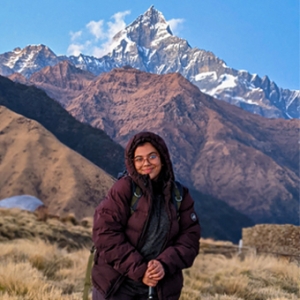Nepal is a magnificent gateway for all adventure lovers. You can enjoy an interesting time in this gorgeous nation by trekking to the mountains, visiting the historic villages, looking for waterfalls, and visiting other locations. There are many waterfalls in Nepal, but the Himalayan Region has a number of Popular waterfalls in Nepal.
The most amazing wonders on Earth are the waterfalls. Your face is lightly sprinkled with the natural water, the cool breeze feels refreshing, and the thundering rivers always bring you joy. Finding the perfect waterfall can be a great adventure, and you might even find some great hidden treasures.
Nepal is home to some of the world's most breathtaking waterfalls. These breathtaking waterfalls in Nepal are the crowning achievement of nature. Discover the mind-blowing scenery and breathtaking waterfalls in Nepal near the unusual Himalayas. Viewing the stunning waterfalls in Nepal is one of the nicest things to do while there. Nepal is a landlocked country, so you can't get to the sea or beaches from there. But don't be concerned. The beautiful waterfalls found in many regions of Nepal fill this void.
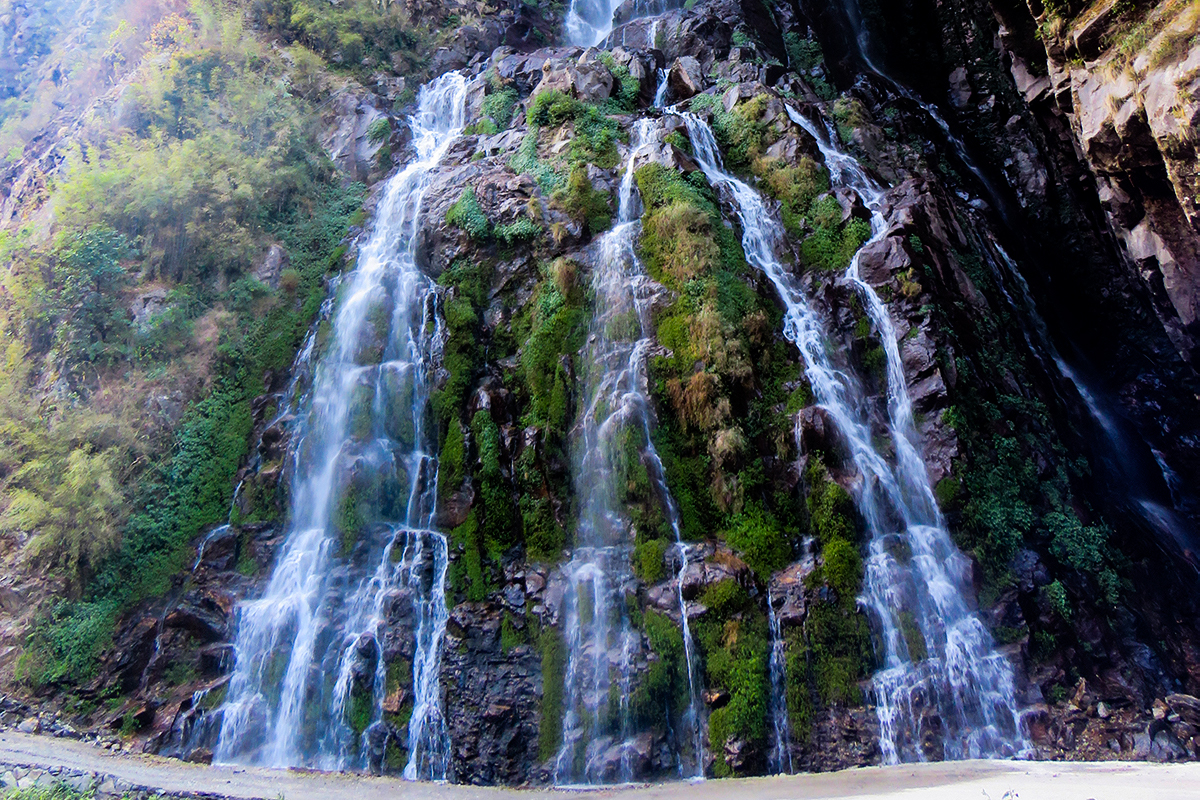
Waterfalls typically originate in the top sections of steep mountains. Waterfalls are created for a variety of reasons. Land formation can also result in waterfalls because when there is a cliff, the rushing water just cascades over the side. Occasionally, a waterfall is formed when meltwater overflows the edge of an ice shelf. Every waterfall is equally lovely, and all waterfalls are natural; they are not man-made.
One of Nepal's top tourist destinations that is worth enjoying in your free time is the waterfalls. In Nepali, the waterfall is termed "Jharana." In Nepal, waterfalls can be found tumbling down hills covered in thick forests. Your trip will be spiced up by these endearing waterfalls, and you'll have unforgettable memories that last a lifetime. Exploring waterfalls is a great thing to do on a date, a honeymoon, a family vacation, a group vacation, a solo vacation, a romantic vacation, a picnic, a short drive, a long drive, etc. But if you truly want to experience it, it's advised that you go to waterfalls mostly during the rainy season. Due to the drought, the waterfalls are not beautiful in the summer. In the winter, the water is also freezing, and you don't want to become sick. Instead of seeking out waterfalls in the winter, it is preferable to take in the snowfall in Nepal's hill stations.
The best time to visit waterfalls is in the spring. However, you won't see the same magnificent, glittering, and stunning waterfalls as you would in the autumn. In Nepal, the waterfalls are large, loud, and beautiful during the monsoon season.
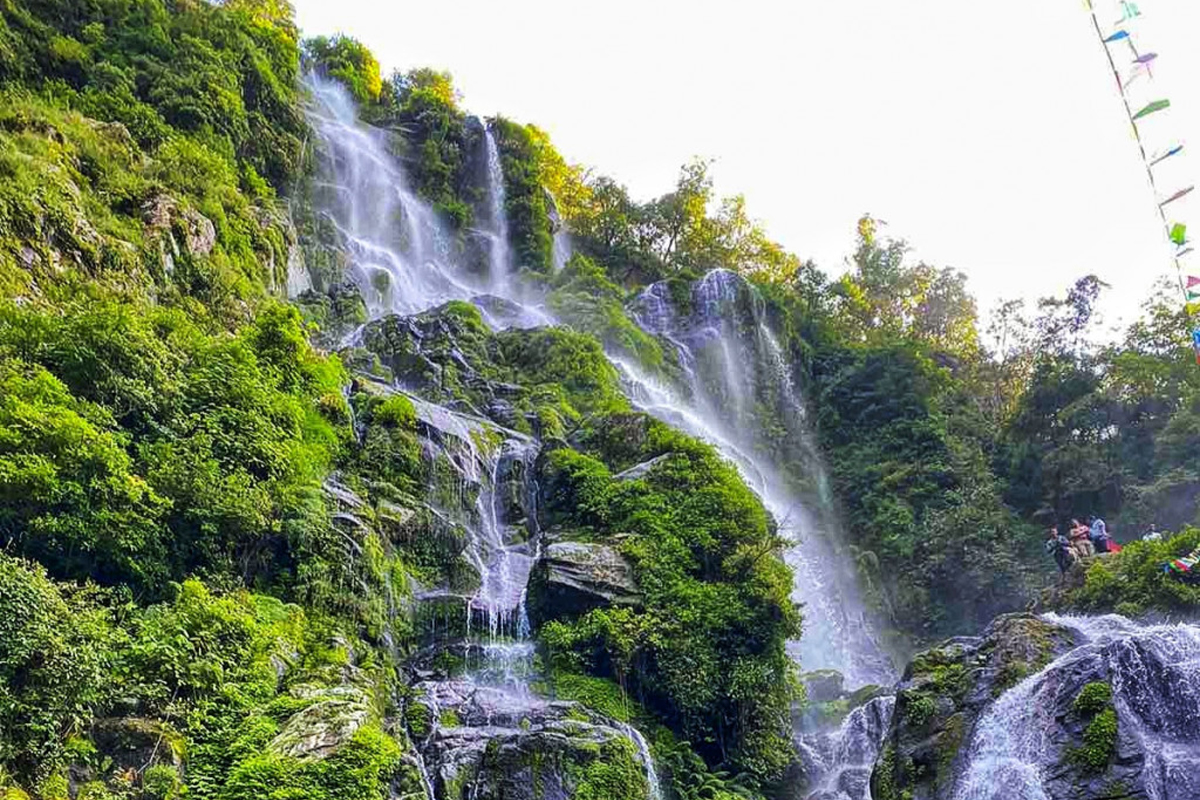
When pursuing this magnificent waterfall, the journey could occasionally extend beyond a day. Here is a list of the most amazing and well-known waterfalls in Nepal.
Top 10 Popular Waterfalls in Nepal
Pachal Waterfall, also known as Pachal Jharna in Nepali, is known as the tallest waterfall in Nepal, boasting a height of approximately 481 to 483 meters (1,578 to 1,585 feet). Its remarkable height was determined through a GPS survey. Situated within the Pachal Jharna Gaupalika of Kalikot District, the Karnali Provincial government has designated this majestic waterfall as a key tourism development site. The entire village municipality has been named after this spectacular natural attraction, emphasizing its importance as a tourism destination in the region.
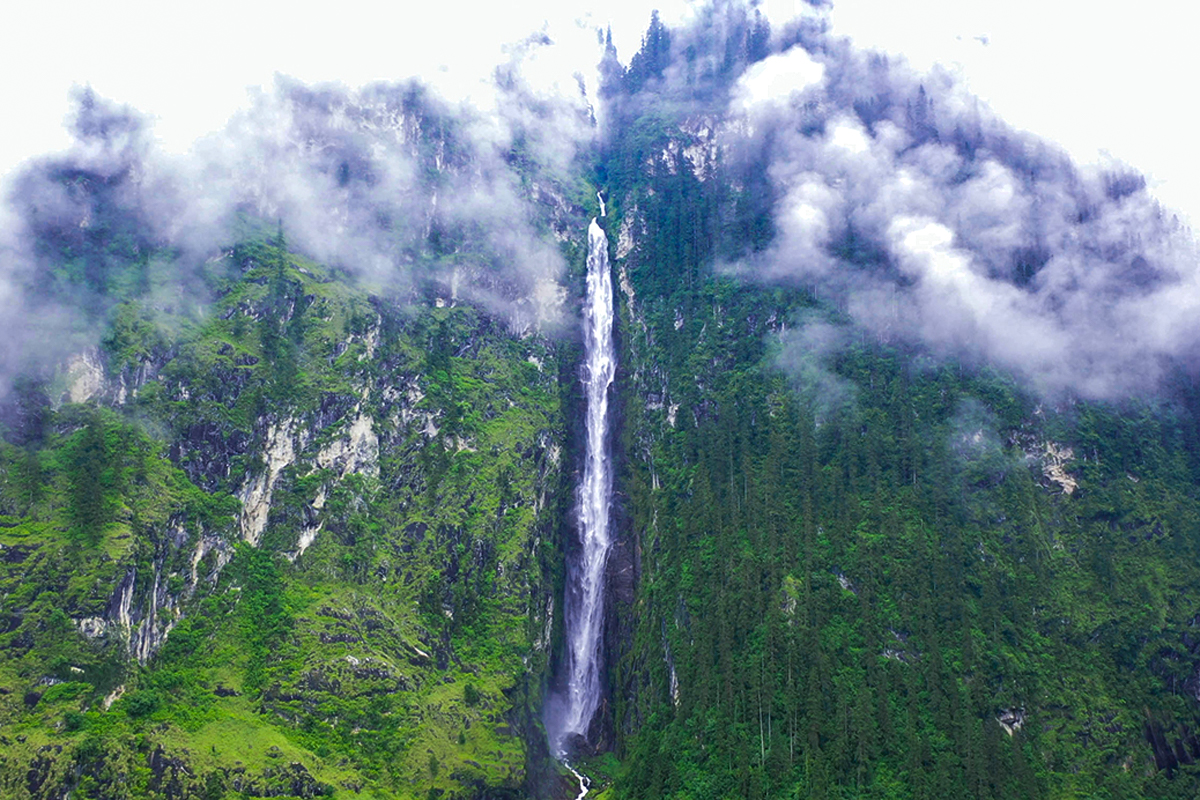
Tucked away along the route from Beni to Jomsom, Pachal Waterfall offers a refreshing stopover for travelers embarking on the journey through the pristine landscapes of Kalikot. Its remote location adds to its allure, providing a tranquil retreat from the hustle and bustle of everyday life. As visitors approach the waterfall, they are greeted by the thundering roar of cascading waters, a sight and sound that instills a sense of wonder and tranquility. With its breathtaking height and secluded ambiance, Pachal Waterfall truly stands as one of Nepal's natural wonders, inviting travelers to embark on an unforgettable journey of exploration and discovery amidst the country's rugged wilderness.
Rupse Falls is a waterfall that is 300 meters in height and is known as one of the hidden jewels in central Nepal. It is a major attraction in Mustang. It is situated between the route from Beni to Jomsom, which is the most popular route on the Mustang tour, and the Myagdi area. The Rupse Waterfall in Nepal is a hidden gem waterfall with the world's deepest canyon and hollowest pathways. This waterfall is one of Nepal's wonders. The largest town, Beni, is around 38 kilometers away from the waterfall, which requires several hours. It is located in Nepal's Myagdi province's Dana VDC district. This trip offers the chance to travel to far-off regions and fascinating locales, in addition to taking your breath away. Rupse, a charming town, is about 30 miles from Marpha.
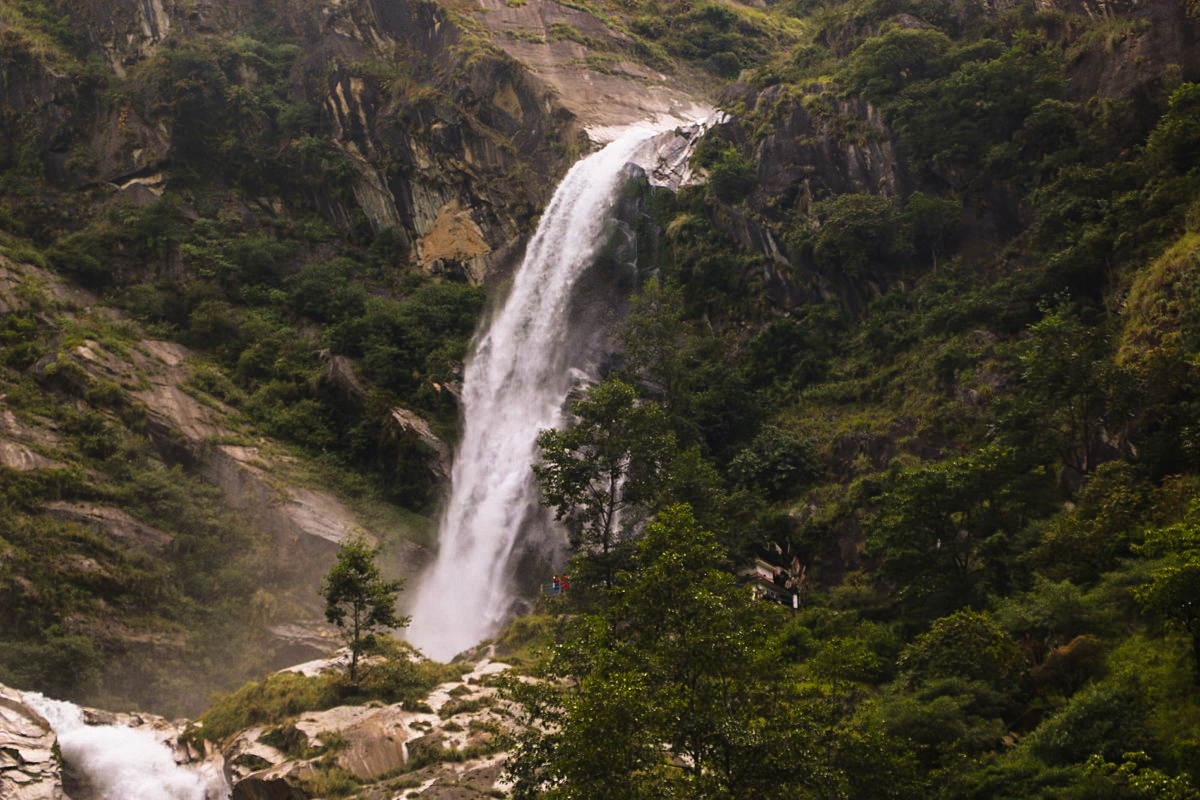
In the Annapurna rural community, 110 kilometers from Pokhara, is the beautiful waterfall known as Rupse Falls. The native term for Rupse Fall is "Rupse Chhahara." in the middle of the highway. As you go from Mustang to Jomsom, you will come across Rupse Fall in the middle of the road. This waterfall is conveniently located. To get some rest, pull over beside the road and take in the waterfall. People who walk by the Rupse Fall are doused in the glistening water that jumps from a height of 300 meters. You temporarily forget about all the tension in your life when you hear the waterfall's calming sound. The Rupse waterfall's current gets stronger during the wet season. The Kali Gandaki Gorge, which is the deepest in the world, is adjacent to Rupse Fall.
Your trip will be more exciting when you see the Kali Gandaki canyon pouring over the side. A good reason to leave the busy city for a time and relax in nature is to explore Rupse Fall.
Simba Falls is a collection of five tiny waterfalls in Miankhel. The word comes from the Tamang language and is used to describe how cold the water is. The waterfall can be found deep within the verdant woodland. Simba Falls is a hidden gem that is close to Manikhel, about 45–50 km from Kathmandu, the capital city. The trail is about an hour long, but it is very challenging during the monsoon. However, it makes for a fun thing to do on the weekend. In addition to that, the scenery is breathtaking. As soon as any of your sensory receptors come into contact with the chilly and calming water, you will feel wonderful and unadulterated.
Simba Falls is one of the Famous Waterfalls in Nepal that can be found deep within the bush and is surrounded by greenery. It is not easy to reach the location from which we can see all five waterfalls that are connected to the Simba fall. And believe me, even if it is more difficult to get there, it is well worth it to see what it looks like. The panorama of the entire cascade is breathtaking. There are rolling hills in every direction, and in the middle of it all sits a waterfall with a breathtaking view.
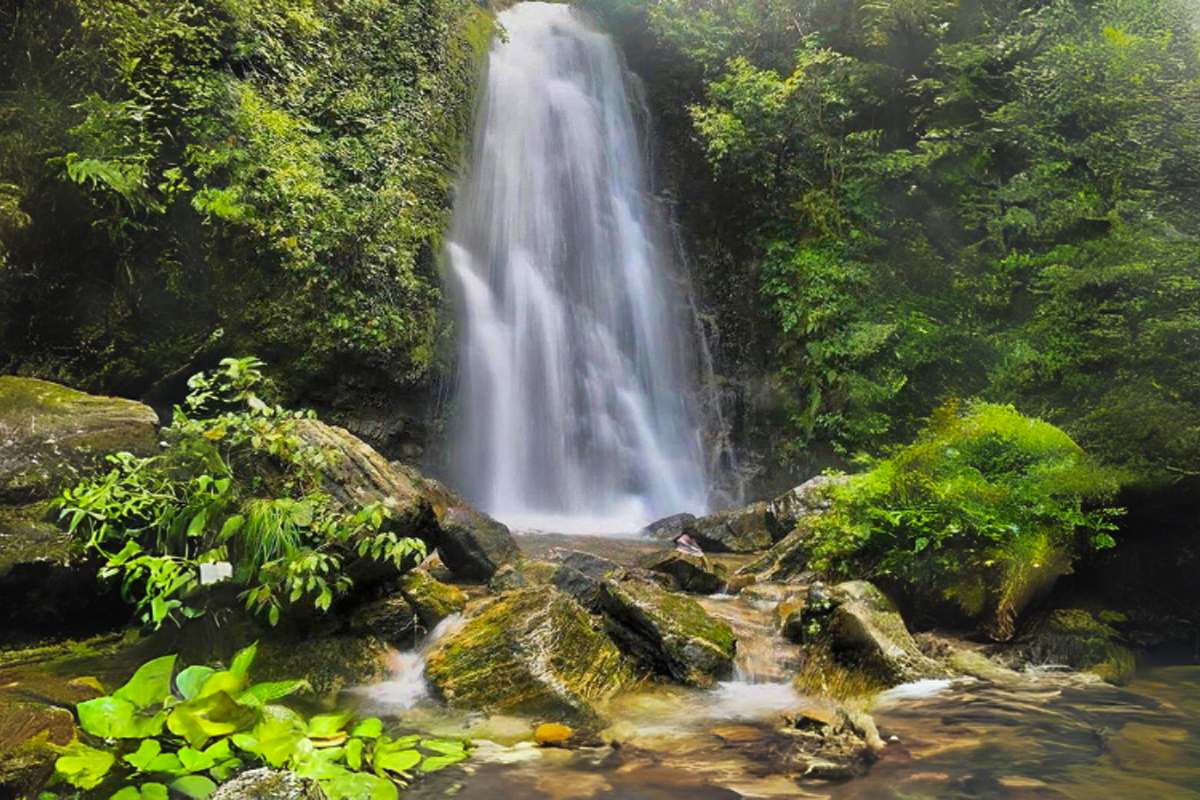
The route to Simba Falls is particularly congested and risky due to its narrowness. As we make our way through the jungle and get closer to the waterfall, we can hear the spray from the cascade as it greets us with a refreshing breeze, and the air around us becomes chillier as the water condenses into droplets and falls as rain. When you finally make it to the waterfall, you'll experience the nicest moment of your trip thanks to the calming sound of clear and unpolluted streams flowing together with the calming sound of the air moving through the forest. The misty hills and amazing waterfall made for a priceless and unforgettable moment of relief.
Davis's Falls, also known as the Devi Falls, is situated in Pokhara, Kaski. Following its descent to the bottom, the water creates a tunnel. The length of this tunnel is roughly 500 feet (150 m), and it is buried approximately 100 feet (30 m) below the surface. On July 31, 1961, a Swiss couple decided to go swimming, but unfortunately, the woman ended up drowning in a pit since the water level was too high. It took a lot of work, but her body was eventually pulled out of the river Phusre three days later. Her father had originally wished to name the waterfall "Davi's Falls," after his daughter's name, but later it was changed to "Devi's Fall." It is known as Patale Chango in Nepali, which translates to "Underworld's Waterfall." Patale Chhango is also spelled Pataal Ko Chango. This is one of the most popular tourist destinations in Nepal. Following its passage through the tunnel, the water then travels through a cave known as Gupteshwor Mahadev Cave, which translates to "cave beneath the ground." The Phewa Lake dam is the water source of these falls. Many people find it hard to find their way around the cave because it is so well-decorated. This is one reason why it is so popular with tourists.
Devi's Waterfall or Davis Waterfall in Pokhara is unique among the nation's waterfalls because of its natural phenomenon. When the monsoons are at their worst, the splashes of water on the boulders make for an amazing sight. Fewa (Phewa) Lake is where the water for Devi's Falls comes from. It flows into a rocky creek and then out of the base of the waterfall. Even though it might appear impossible, the hole below the waterfall is connected to the underground passages.
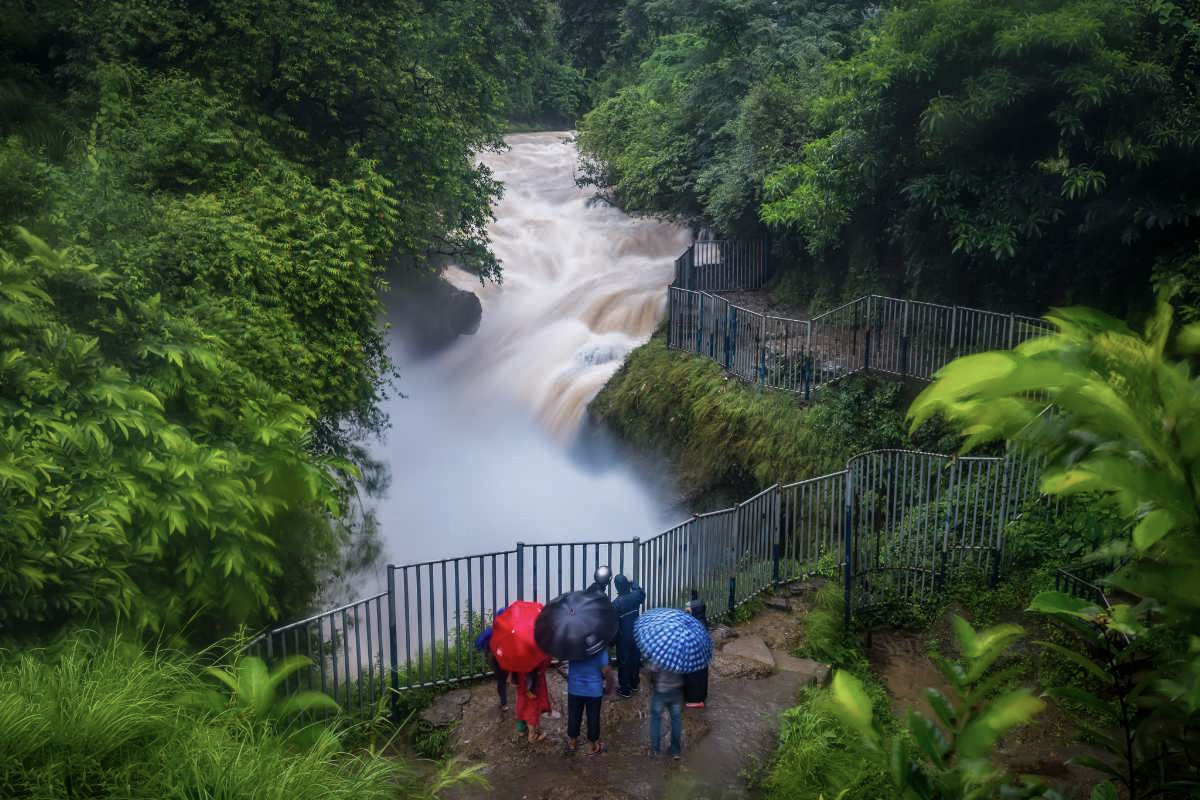
At first sight, the waterfall doesn't seem all that exciting or particularly pleasant, save for a few splashes here and there. It is recommended to visit during the monsoon season for a true appreciation of its splendor. At this point, the water pierces the stony slopes and flows into a tunnel beneath the surface. Human sounds are drowned out by the roar of the waterfalls, and an umbrella or raincoat is required due to the water's rushing motion. Despite the high water level, tourists continue to stroll near to the increased mean, even if doing so puts them at risk of drowning.
Tindhare Jharana, also known as the famous BahuBali Jharana, is located in Kavre district's Roshi municipality. It is in the Kaphal danda of Kavre, which is east of Kathmandu. It got its new name, "Bahubali," from a scene in the movie Bahubali that takes place at a waterfall that is virtually identical to the Tindhare Jharana. This waterfall has a height of approximately 300 meters. This waterfall and the area around it are so beautiful that anyone traveling through Nepal must visit them. The fact that the waterfall is formed by three separate streams is where the name "three-stream waterfall" originates from.
The months of March through May are ideal for a vacation there. During the monsoon season, the amount of water in the waterfalls goes up, which makes them look even more beautiful and makes you want to stand under them and enjoy the cool spray.
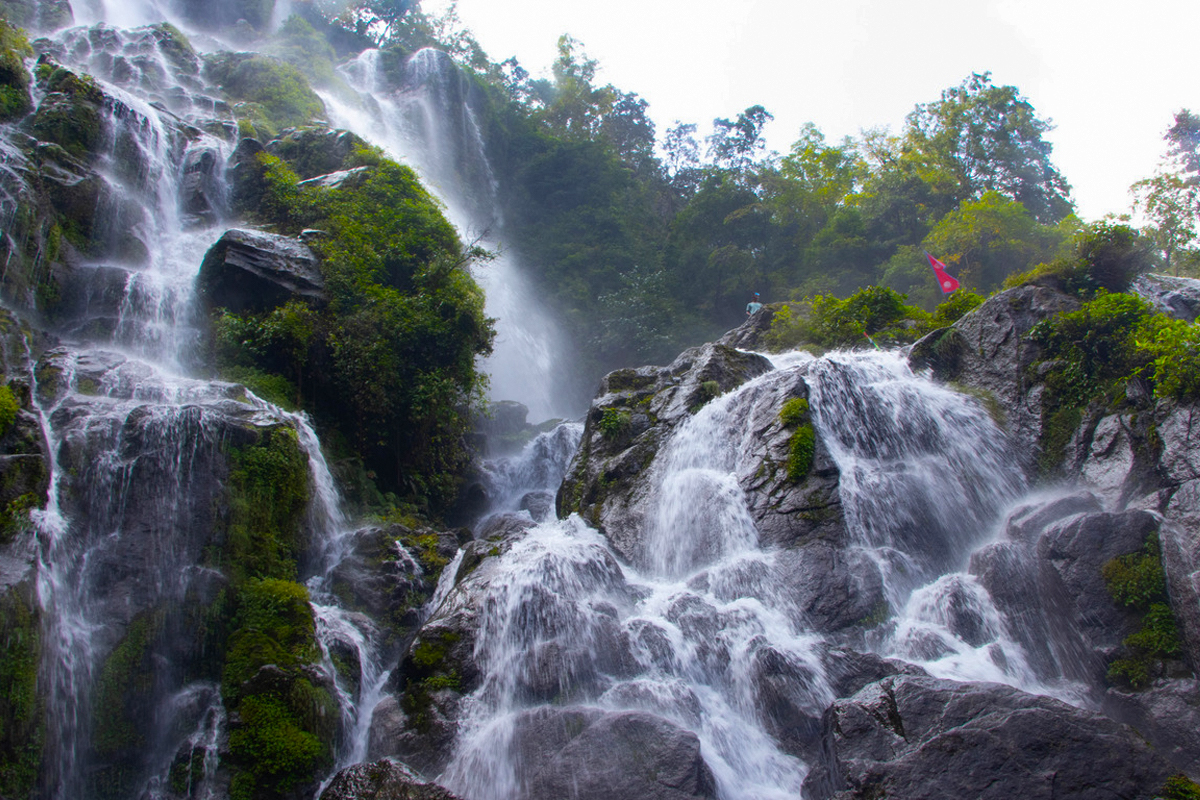
The waterfall has been there for centuries, but it became popular after drone photos were taken in February. The waterfall has three streams, hence its name. Many people from neighboring districts visit Kavre for its beauty, and many people from neighboring districts visit it daily for hiking. Social media apps revealed Nepal's hidden gems. This new scenic spot is beautiful, and adventurous, and also has high tourist potential. In addition to this waterfall, you can visit Namobuddha monastery and scenic Dhulikhel. Jharana is also known for its Newari and Tamang villages. This wonderful place was promoted as a destination at a local event. It's becoming popular among the Kathmandu Valley and nearby district youth. Also, the different languages, foods, and traditions of the local people will amaze you and help make your trip one you'll never forget. This area's land is still fertile and untouched by the cement industry, so you can see the unique village culture. Popular local drinks include Chhyang and Raksi. Hiking with your group is another highlight of this trip.
Hyatung Waterfall is the largest waterfall in Nepal and the second-largest waterfall in all of Asia. This waterfall is in the Terhathum district. It drops 365 meters straight down and can be reached by car. Even though the waterfall is hidden in a green forest, it is easy for visitors to be taken in by its beautiful scenery. One of the most captivating aspects of the trip is when the rainbow appears in the air around the waterfall, which happens on occasion. Another thing that makes this season so beautiful is all of the wildlife, including the animals, birds, and plants.
This longest waterfall in Nepal receives a significant amount of water due to the monsoon season, but the water may evaporate during the winter. The path is very straightforward, and the final stop for the vehicle is at Batase, where there is a tea house offering service.
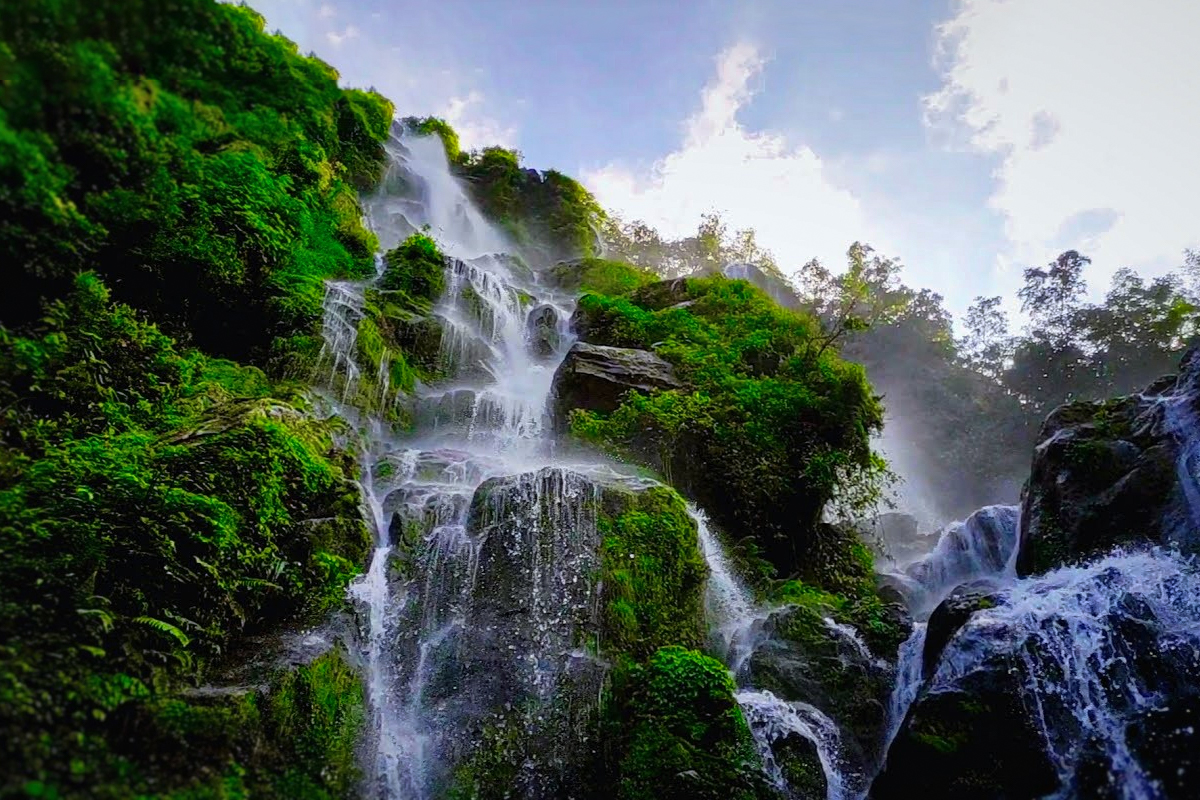
This Biggest Waterfall in Nepal, can be reached after a hike of an hour in most cases. In our opinion, the months of September through the middle of November are prime times to visit this waterfall. We do not advise traveling there during the rainy season because there is a greater chance of danger on the way during that time of year. Also, there is a high chance of fog in the winter, which makes it hard to see the natural world. In the summer, the flow of the waterfall will slow down. Okhaldhunga.
The Pokali waterfall is one enormous and stunning waterfall, which can be seen in Okhaldhunga. Nepal's Pokali VDC cascades down from a height of 130 meters. Locals often call this place "Dughdeshow Mahadev" because it is a holy place. Pokali Jharna is the second-highest waterfall in Nepal, located in Okhaldhunga District, Sagarmatha Zone.
This waterfall is another feature of Gauri Forest Poakli, which has a lush forest. The gushing river water on the rocks is soothing. When water meets rock and falls from the sky, it feels like a rainbow. The beauty that can be found there during the rainy season is indescribable and will help you forget about any concerns you may have. In the spring, between April and May, canyoneering is another activity that is highly recommended for this area. One of the top 100 places to see in Nepal is The Pokali waterfall, which can be found in the Likhu rural municipality-9 of Okhaldhunga.
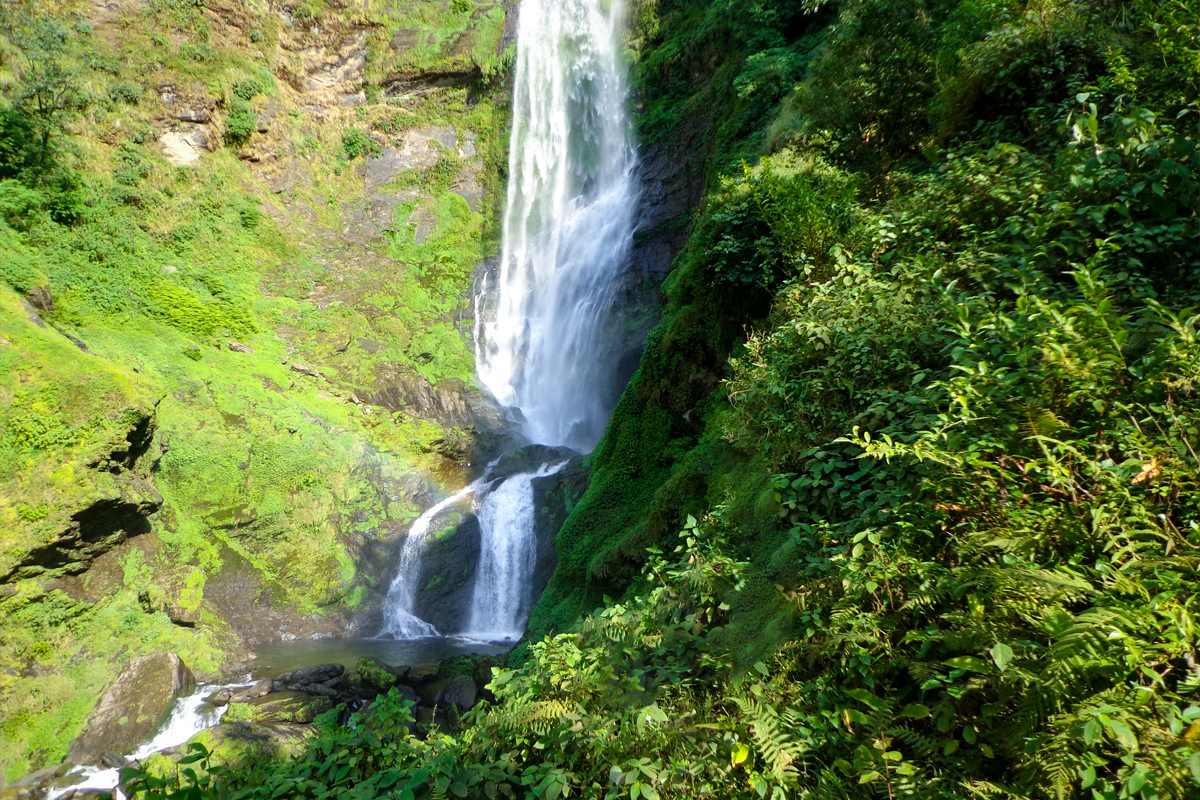
Okhaldhunga's district headquarters is 12 hours from Pokali Waterfall. However, one must travel around 200 kilometers and walk for an hour to get to Pokali Jharana directly from the capital, Kathmandu. From Kathmandu, the Poklai waterfall is reachable through Kavrepalanchok, Dolakha, Sindhuli, and Ramechhap. Locals say Pokali waterfall attracts fewer tourists due to its secluded, steep location. Locals think Pokali Jharna's distance from the district headquarters prevents infrastructural development and publicity. The Pokali waterfall, which falls from a height of 130 meters, is the subject of many stories. The town of Handidah can be found two hundred meters beneath the waterfall.
The Narchyang waterfall is located in the Annapurna Rural Municipality of the Myagdi district, and it is accessible via the Annapurna trekking trail. This waterfall may be found at an altitude of 1400 meters. The height of the fall is approximately 300 meters. A temple dedicated to Bhumethan can be found close to the waterfall, and during the months of Jestha and Asar, pilgrims flock there to offer their respects.
A fantastic side hike on the way to or from Tatopani can be the trip to the Narchyang waterfall. From Tatopani Village, it is a delightful 45-minute hike with lovely valley views. Enjoy the charming waterfall and tiny pagoda. If you are traveling from Kalopani to Tatopani, you may either make a detour to check this out or get up early to check it out while you are there. From Tatopani, it takes around 20 minutes to walk, and another 20 minutes to climb some stairs to get to the waterfall. Simply return to the main road, cross the first bridge to the right, and continue up the hill towards the village of Narchyang until you reach a little bridge that connects to the steps that go to the waterfall. Since the big waterfall is easy to see from almost everywhere, it is not hard to find. Locals are frequently happy to assist with instructions.
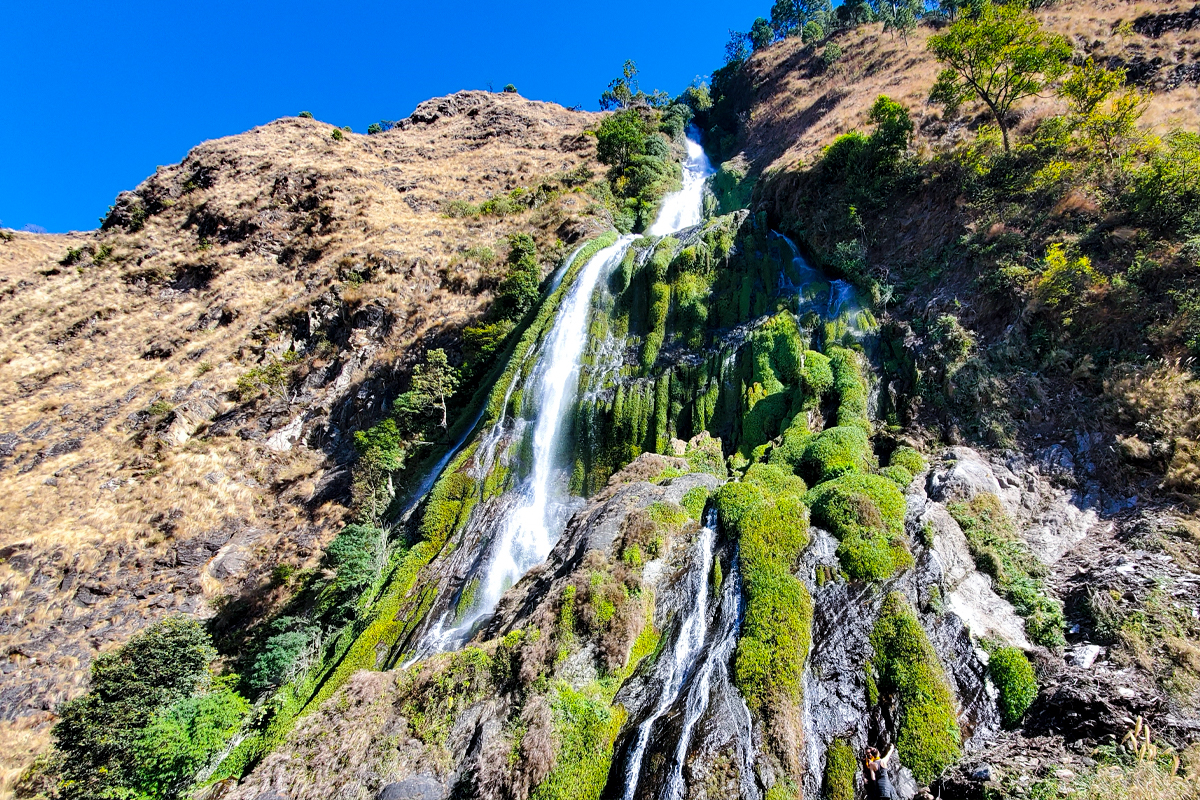
Ganga Jamuna Waterfalls
The Ganga Jamuna waterfall was named after a pair of twin waterfalls, Ganga and Jamuna, in Dhading district. This is a newly opened off-the-beaten trail that is only familiar to a very small number of hikers. Typically, an annual fair is conducted at the adjacent Tripura Sundari temple in November. People come in large numbers to pray uniquely and sacrifice animals at the temple. A natural spring can be found in the area, and it is referred to as Kukur Dhara, which translates to "Dog Spring." People who live in the area have a myth that swimming in this spring will cure rabies.
The route for the hike begins in Dhading Besi, which is the administrative center of the Dhading district. From there, it travels through a number of villages that are home to people from a variety of different ethnic groups, including Newar, Gurung, Brahmin, Chhetri, and Magar. Rhododendron, pine, and oak trees create a lush environment that is home to a wide variety of bird and animal species. Along the trek, you will have the opportunity to take in stunning panoramas of the mountain ranges of Ganesh Himal, Langtang, and Shringi Himal, as well as Manaslu.
Jalbire Waterfall, is one of the Best Waterfalls in Nepal situated at Chandi Bhanjyang VDC-9, in Chitwan, also known as Lamo Jharana. It is located at a distance of twenty minutes' walk from the Jalbire temple. This location is along the Narayangadh-Muglin road portion. This waterfall, which drops 100 meters, is a well-liked tourist spot in the Bharatpur region and is growing in popularity. Visitors frequently go swimming there as well. This is a well-known location in Chitwan for tourists seeking to go canyoning or take part in homestays with the Gurung, the locals. The ideal day trip activity in Jalbire is canyoning, which you may also take advantage of.
Entry fees are required in order to experience the Jalbire Waterfall in Chitwan. Foreigners and Nepalis are charged different entry fees. Foreigners must pay Rs 50 to view the Jalbire waterfall, whereas Nepalis only need to pay Rs 10 to do so. For the Chitwan people, who suffer from extreme summer heat, this site is a true sanctuary where they may enjoy nature's gifts right outside their door. Nowadays, young people who wish to spend some time with their special someone often visit Jalbire Waterfall. Jalbire is the place to go if you want to spend some time with yourself away from the hectic metropolis.
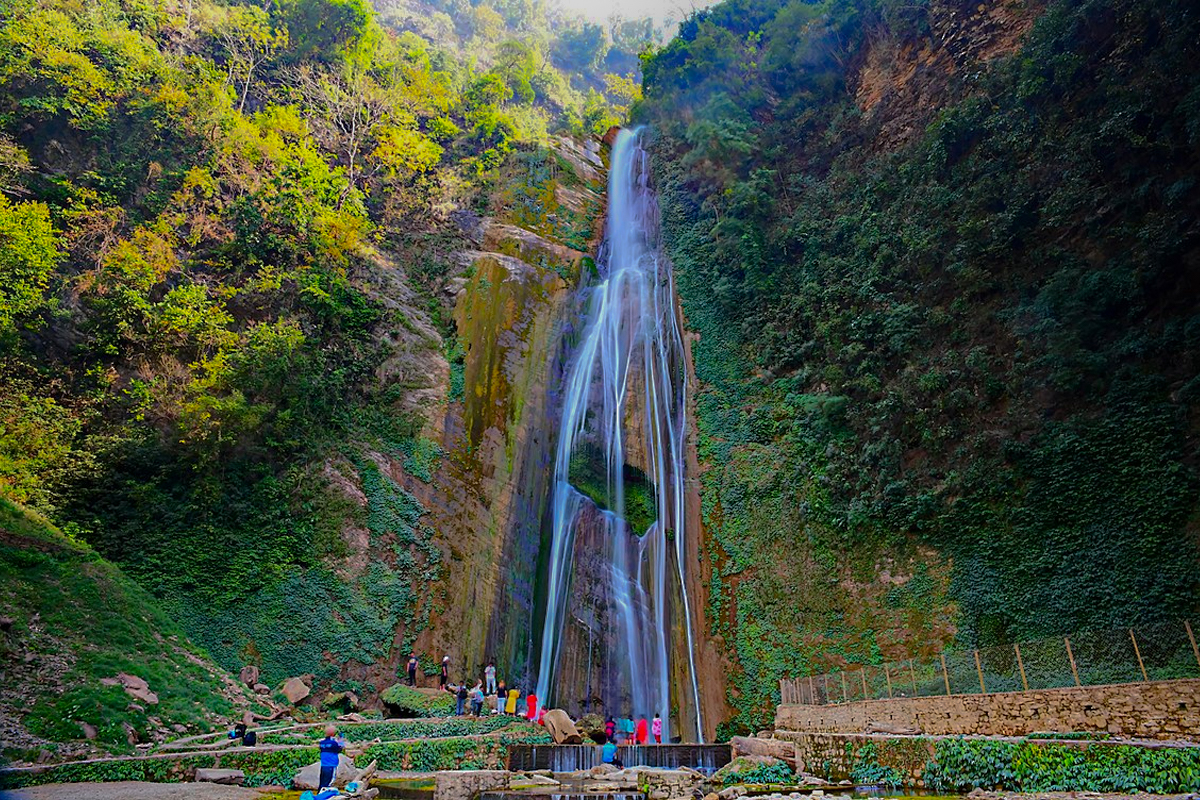
Jalbire Waterfall in Chitwan is renowned for music video and movie shooting, both of which require an additional fee. There are several fees, which vary depending on your job. Regarding the natural Rockslide and leaping pool, Jalbire Waterfall is recognized for being among the top canyoning in Nepal. Visitors to Chitwan National Park on a Chitwan Jungle Safari Tour are welcome to stop by and take advantage of the summertime natural spring.
Conclusion
In conclusion, Nepal's waterfalls stand as captivating wonders of nature, offering a blend of beauty, serenity, and adventure. From the towering heights of Pachal to the hidden gems like Simba Falls, each cascade holds its allure, beckoning travelers to explore and marvel at their majesty. As you journey through Nepal's diverse landscape, take the time to appreciate the pristine wilderness and respect the local communities that call these areas home. By embracing sustainable tourism practices, we can ensure that these natural treasures remain untouched for generations to come. So, whether you seek tranquility, adventure, or simply the awe-inspiring power of nature, Nepal's waterfalls await, ready to leave an indelible impression on your heart and soul.













